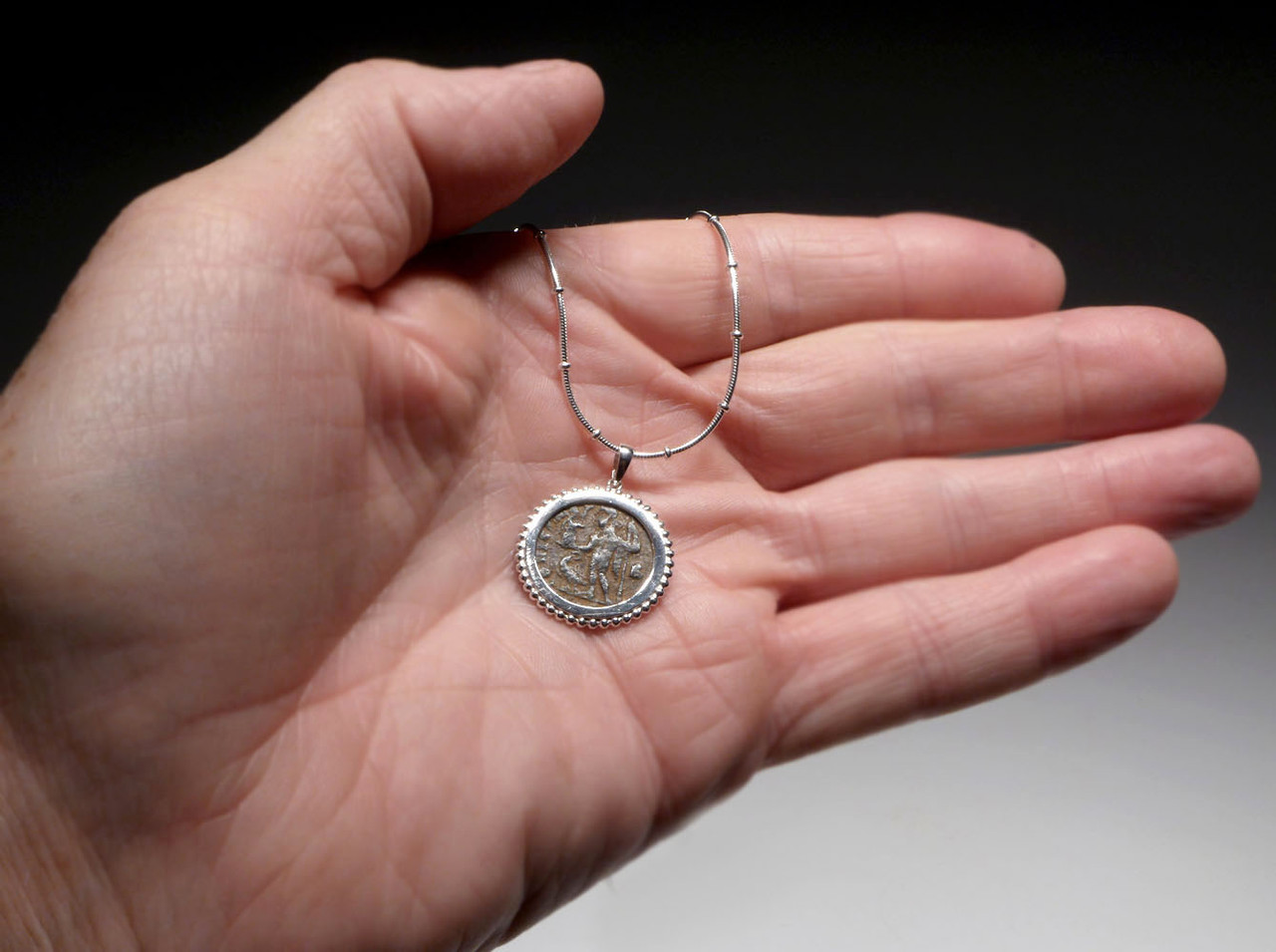Product Description
From the late period of the Roman tetrarchy, this authentic bronze coin issued under the Emperor Licinius, possesses a beautiful and prized colorful bronze patina, making for an attractive color contrasting with the bright polished sterling silver pendant setting. It is set in a beautiful, hand-made sterling silver beaded tab back pendant. The coin shows the reverse side of the coin featuring a prominent image of the Roman god Jupiter and the inscription "IOVI CONSERVATOR AVG" which translates to "Jupiter, conservator of the emperor". Equally fitting for either a man or a woman to wear, no doubt, this piece will really make for a unique and interesting fine jewelry pendant for any lover of ancient history. Would also make a fascinating gift to any pilot, private, commercial or military.
GUARANTEE: ALL PURCHASES ACCOMPANIED WITH A WRITTEN GUARANTEE OF AUTHENTICITY
SETTING: 925 STERLING SILVER
COIN: BRONZE AE3
COIN AGE: 308 - 324 A.D.
DIMENSIONS: .85" diameter overall
:::: Includes Gift Box
:::: Includes CERTIFICATE OF AUTHENTICITY / HISTORY SHEET
ADD THE DISPLAYED STERLING SILVER BEADED SNAKE CHAIN NECKLACE
MORE ANCIENT ROMAN COIN JEWELRY
HISTORY
Jupiter, also known as Jove, is the god of the sky and thunder, and king of the gods in ancient Roman religion and mythology. Jupiter was the chief deity of Roman state religion throughout the Republican and Imperial eras, until Christianity became the dominant religion of the Empire. In Roman mythology, he negotiates with Numa Pompilius, the second king of Rome, to establish principles of Roman religion such as offering, or sacrifice.
Jupiter is usually thought to have originated as a sky god. His identifying implement is the thunderbolt and his primary sacred animal is the eagle, which held precedence over other birds in the taking of auspices and became one of the most common symbols of the Roman army (see Aquila). The two emblems were often combined to represent the god in the form of an eagle holding in its claws a thunderbolt, frequently seen on Greek and Roman coins. As the sky-god, he was a divine witness to oaths, the sacred trust on which justice and good government depend. Many of his functions were focused on the Capitoline Hill, where the citadel was located. In the Capitoline Triad, he was the central guardian of the state with Juno and Minerva. His sacred tree was the oak.
The Romans regarded Jupiter as the equivalent of the Greek Zeus, and in Latin literature and Roman art, the myths and iconography of Zeus are adapted under the name Iuppiter. In the Greek-influenced tradition, Jupiter was the brother of Neptune and Pluto, the Roman equivalents of Poseidon and Hades respectively. Each presided over one of the three realms of the universe: sky, the waters, and the underworld.
 US Dollars
US Dollars
 AUD
AUD
 CAD
CAD
 POUNDS STERLING
POUNDS STERLING










